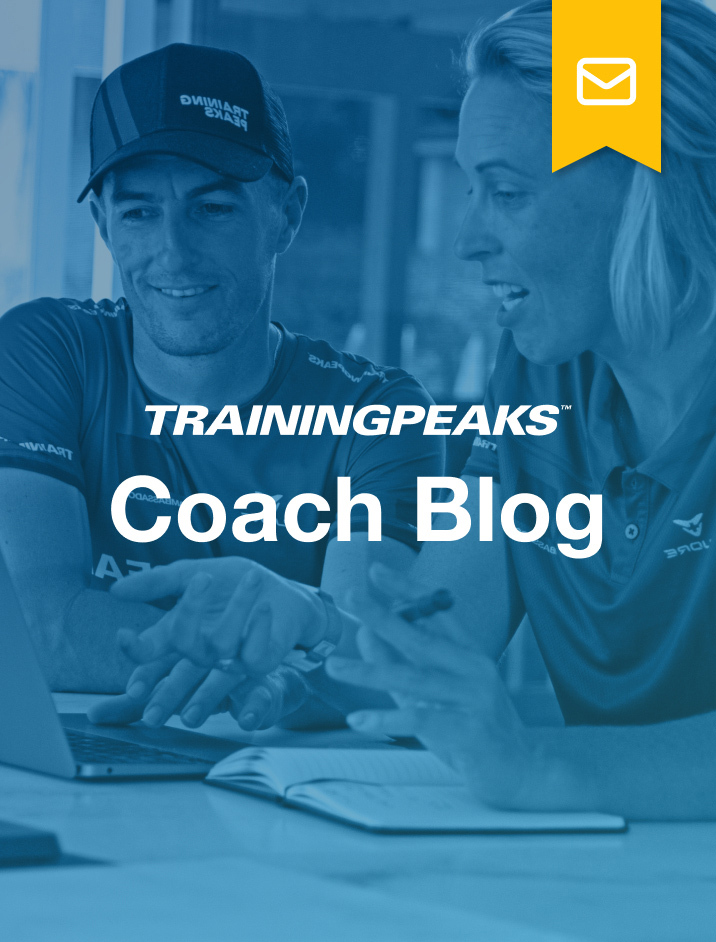Coaches have so many different choices for workout for athletes. It can be overwhelming at times to decide which workouts to prescribe and when in the training cycle. At times, it is tempting to use the same well known intervals for many different athletes, which may or may not be the ideal.
There are often training architectures that we can roughly follow for many athletes. For example you probably train first time century riders in largely the same way. However, coaching is also an individualistic enterprise – the training plan and workouts are customized and tailored to each individual athlete. In this article, I talk about a framework to use to help you decide which workouts to prescribe and how to consider the big picture for each athlete. I’ll go beyond the basic formula of training stimulus + recovery = adaptation.
As experienced coaches, you understand much of this process implicitly, based on experience. Hopefully you can use this post as a simple step-by-step or checklist guide to make sure you are considering the full range of ways to construct the best workouts for your athletes.
Start at the End
Begin with the end in mind. At the beginning of the season or the beginning of your work with the athlete, sit down and determine A-priority events and the overall event schedule. Doing this will inform the rest of the process. What aspects do you need to know? You need to know the physiological demands for an event: what are the traits that will lead to success? In a criterium for example, there is the ability to ride near threshold power for most of the race, there is top end speed, and the anaerobic endurance for repeated accelerations.
You need to know how the individual responds to training, which will be observed over time with input from the athlete and training log.You need to know which training adaptations we are looking for based on where the athlete is currently, assessed through racing history or testing.
After you have a relative roadmap of where you will be taking the athlete through training, you need to know the training stimulus that will lead to the desired adaptation. You also need to know how those different training stimuli interact (should weightlifting be done before or after a ride for this athlete?) You need to know if there are any prerequisites for building the desired fitness. Does the athlete need to be able to complete four hours of easy riding or be able to squat 200 lbs. before training can progress?
Once you know the requirements for each athlete, you need to decide how much of the training stimulus, how much recovery, which direction to take the adaptation, and the overall yearly plan. After all this you can begin to slot in the correct workouts. Workouts can be decided by where in the training progression, and where in the periodization they will be done.
Always be Progressing
From year to year, and from week to week, we need to increase the stimulus in order to continue hang an adaptive response. If you do the same workout for 3 weeks, your body will start adapting to it, and that amount it can change your physiology starts to diminish. The basics of this can be either adding another interval to the set or doing them faster or decreasing recovery.
Here are the ways that you can change intervals to keep that progression:
- Number of intervals volume
- Rep length
- Terrain (hilly, surface, variable)
- Rest between (stationary, steady movement, drills)
- Pre-fatigue (training density easing up to, or mental efforts preceding)
- Recovery
- Speed of intervals – within reps (variety) overall workout
- Neuromuscular training (sprints, ploys, surges mixed in)
- Feedback ( knowledge like power data, unknown distance, course prep, etc)
Creating the Optimal Challenge
A good workout should not be too easy or too challenging. This refers to both the physical and mental challenge. To optimize flow, (see the books Flow, and The Rise of Superman: Decoding the Science of Ultimate Human Performance for more information on the increasing progression of challenge and skill level) 4% harder than your current skill level is the optimal challenge, offering the best way to enter the mental state of optimal experience. Taking into account other life stressors (work, school, sleep, etc) we can adjust the difficulty of workouts even on a day-to-day basis.
How much concentration an athlete can devote to a workout is partially based on how many decisions and how much mental energy the athlete has had to use earlier in the day. We are cognitive misers- that is we have a finite amount of mental energy.
Base Building and Increasing Specificity
You have heard of aerobic base, but we should also consider a speed and strength base as well. You want to start each harder training block with a base of ligament and tendon strength, and have done some basic sprinting so that you don’t get really sore or over exert the neuromuscular system when you start in-depth speed work. As the training progresses, harder, more intense workouts will support the speed and endurance bases, but be more specific to the needs of the goal event.
Keep in Mind
A huge volume of the work done throughout the season will be general endurance, in which we are training the use of fuel, capillarization, mitochondrial density, aerobic enzymes, and cadiorepsiratory adaptations. The more elite/high volume an athlete is, the larger proportion of this type of work there will be. Recovery rides and runs have to be slow enough and easy enough to enhance recovery and not prolong it.
No two athletes are the same, and that is the fun of coaching. Creating new workouts to help athletes improve and stay engaged is a continual process. Using these basic steps can help increase your library and give you more options to challenge athletes.




